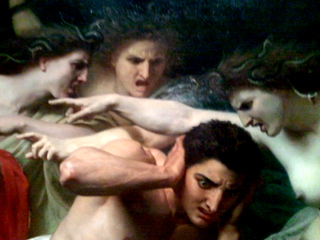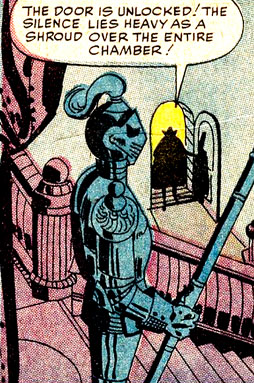
 “There are many forms of silence,” declared Luigi Nono (1924-1990). These chapters of silence mark my ongoing quest to, as Nono sought, “find silence full of voices.” These compositions are intended for solo studio listening or can be heard in tandem with back- and foreground sounds, preferably from everyday life.
“There are many forms of silence,” declared Luigi Nono (1924-1990). These chapters of silence mark my ongoing quest to, as Nono sought, “find silence full of voices.” These compositions are intended for solo studio listening or can be heard in tandem with back- and foreground sounds, preferably from everyday life. 
I use silence to bracket listening as well as foster reflection, uncertainty or to dilute the listener’s memory. Improvisor Wade Matthews in his essay “Intimacy and Limits; Reflections on Stockhausen’s Dog,” suggests “The meaning of silence… is no longer a neutral zone surrounding a musical object, but something fully and actively incorporated into the musical process.” This notion can be heard in glimmers of the past; most everyone has heard the cataclysmic silences in Beethoven’s fifth symphony. Composer Brian Ferneyhough’s Unity Capsule (1975-76) for solo flute explicitly requires, in one section, the flutist to freeze the playing stance for “15 seconds of absolute silence and lack of movement.”
Along with Cage’s gradually evolved notions of silence as a demarcating, empty duration or unintentional activity, silence can also embody performer-instigated endurance, the unconditional positive regard advocated by Carl Rogers, or muted, overarching oppression. As a political act, silence serves as a reservoir of action and/or non-violent surrender. Interviewed in the book Pink Noises, turntablist Maria Chavez observes, “I think people have a view of being loud, being abrupt, as being aggressive. But silence is really aggressive too.”
Computer-based sound editing has made true total silence, also known as “digital black,” possible; this potential removal of the noise floor (or room tone) hitherto endemic to LPs and cassettes can open the ears profoundly. In his book One Square Inch of Silence, nature recordist Gordon Hempton declares “Silence is not the absence of something, but the presence of everything.”
audio from the silent home movies of the Ring family  (2011) captures electromagnetic impulses created by dubbing vintage home movies, randomly ganged one after the other, onto VHS tape. Released in 2011 on the downloadable album Perforate Silence (Spectropol).
(2011) captures electromagnetic impulses created by dubbing vintage home movies, randomly ganged one after the other, onto VHS tape. Released in 2011 on the downloadable album Perforate Silence (Spectropol).
the mute right channel of Lionel Marchetti’s Train de Nuit  (2010) is at once an homage and an investigation of Marchetti’s work, composed, unusually, “pour un haut-parleur” (“for one speaker”) and thus heard only on the left channel, in mono, not stereo. Marchetti’s Train…, released by Metamkine in 2002 on a 3-inch CD, is a feast of digital errors, recessed dialogue, and juxtapositions (a coughing smoker, the clack of rails, a snippet of “Riders on the Storm”) that startle and delight the ears. Released in 2011 on the downloadable album Perforate Silence (Spectropol).
(2010) is at once an homage and an investigation of Marchetti’s work, composed, unusually, “pour un haut-parleur” (“for one speaker”) and thus heard only on the left channel, in mono, not stereo. Marchetti’s Train…, released by Metamkine in 2002 on a 3-inch CD, is a feast of digital errors, recessed dialogue, and juxtapositions (a coughing smoker, the clack of rails, a snippet of “Riders on the Storm”) that startle and delight the ears. Released in 2011 on the downloadable album Perforate Silence (Spectropol).
Remote  (2002) is from a series of unedited improvisations with an analog television and sluggishly vintage 1980s-era remote control. Released in 2011 on the downloadable album Perforate Silence (Spectropol).
(2002) is from a series of unedited improvisations with an analog television and sluggishly vintage 1980s-era remote control. Released in 2011 on the downloadable album Perforate Silence (Spectropol).
rebreather live at the Seattle Improvised Music Festival June 30, 2002  Improvising with Alex Keller as rebreather, we approached sound and silence as neither opposites nor absolutes but instead as a dynamic continuum of musical mass, velocity, and space. This live, unedited performance was recorded from the mixing board at the Seattle Improvised Music Festival on June 30, 2002.
Improvising with Alex Keller as rebreather, we approached sound and silence as neither opposites nor absolutes but instead as a dynamic continuum of musical mass, velocity, and space. This live, unedited performance was recorded from the mixing board at the Seattle Improvised Music Festival on June 30, 2002.
of silences intemporally sung: Luigi Nono’s Fragmente-Stille, an Diotima  (2011) Here, I have inverted Nono’s quartet by muting the audible passages played by the LaSalle Quartet and then elevating room tone, discreet ambiance, and other assumed silence high above the threshold of audibility.
(2011) Here, I have inverted Nono’s quartet by muting the audible passages played by the LaSalle Quartet and then elevating room tone, discreet ambiance, and other assumed silence high above the threshold of audibility.
Unlike most of my music, this piece is meant to be heard only on compact disc. A limited edition album of this found soundscape is available from reductive music.


 “There are many forms of silence,” declared Luigi Nono (1924-1990). These chapters of silence mark my ongoing quest to, as Nono sought, “find silence full of voices.” These compositions are intended for solo studio listening or can be heard in tandem with back- and foreground sounds, preferably from everyday life.
“There are many forms of silence,” declared Luigi Nono (1924-1990). These chapters of silence mark my ongoing quest to, as Nono sought, “find silence full of voices.” These compositions are intended for solo studio listening or can be heard in tandem with back- and foreground sounds, preferably from everyday life. 





